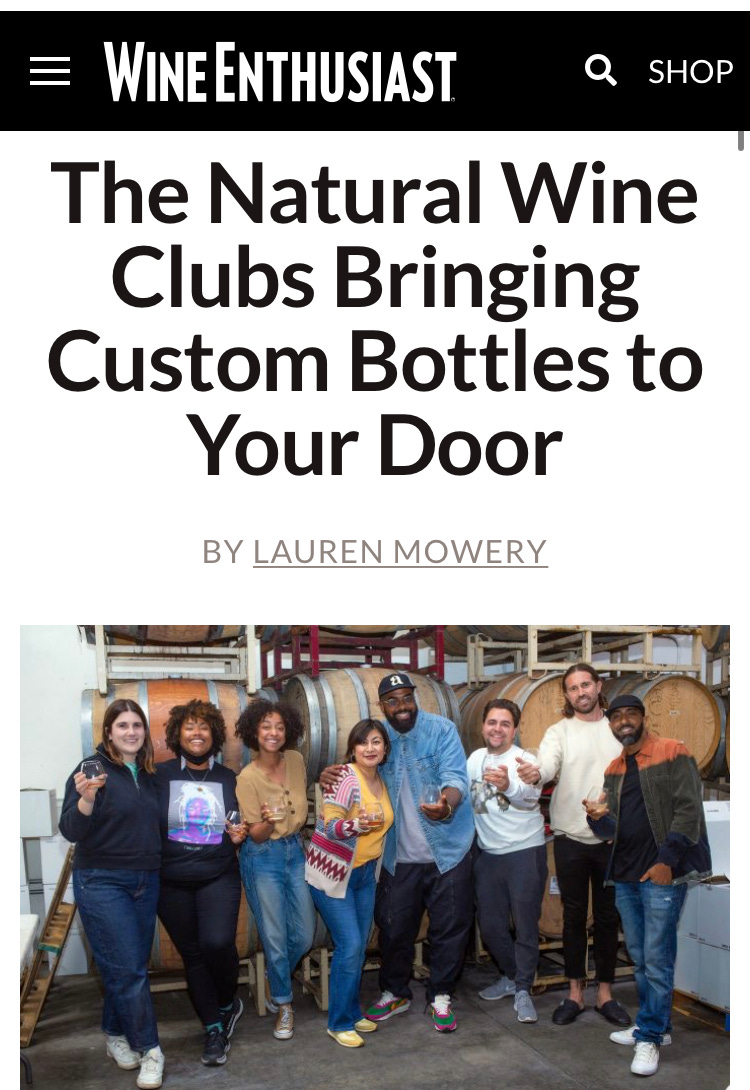What About Bob(inet)?
Bobinet. The first time I had wine from Domaine Bobinet was in October 2017 at La Buvette, a natural wine bar and bottle shop in Paris. It was the Hanami Cabernet Franc and it was very good. Domaine Bobinet, located in Saumur in the Loire Valley, was formed in 2002 when Sébastien Bobinet, the eighth generation of a family of winemakers, took the vineyard and cellar over from his maternal grandparents. He makes wine with Émeline Calvez, professional-dancer-turned-sommelier, and they grow their grapes organically and vinify naturally, without chemicals. In Ontario, Bobinet wines are imported through the Grape Witches and will be available Friday at 10am. To celebrate this grape news I opened Piak! Blanc, a fresh and quaffable blend made from cabernet franc (yes, you can make white wine from red grapes!).
Wine Clubs. Wine Enthusiast recently wrote that “the rebellion against conventional farming and high-tech winemaking continues its march into the mainstream,” and recommended five U.S.-based natural wine clubs, including Natural Action Wine Club, Thirst Merchants, Orange Glou, Primal Wine Club, and MYSA. But for those of us in Ontario there are several low-intervention wine clubs including Real Wine Exchange (bi-monthly mixed-12-packs by The Living Vine), Crushable (Canadian boutique wines), Albae Wine Club (Spanish organic, low-intervention, and biodynamic wines), Weird Wine Subscription (from Lake Inez), VQ Wines, Boxcar Social Wine Club, and Grey Gardens (quarterly-6-packs). And in BC, there’s the Friends of Summer Society, the annual wine club from A Sunday in August, but it closes May 1st at midnight.
Interest is High in Low-Alcohol Wines. Sonoma sommelier Todd Jolly says “I think of low-alcohol wines as a new category, not as a trend. They’re here to stay.” Jolly considers any bottle under 13% ABV (alcohol by volume) to be low-alcohol, which is a few per cent above my low alcohol threshold of ~11.2%. The article goes on to feature wine styles with lower ABVs, piquettes, ciders and co-ferments, aimed at mindful alcohol consumers, such as Oregon’s The Marigny “Wine Like Beverage,” a 4.2% piquette, and Bico Amarelo from Portugal’s Esporão, an 11.5% Vinho Verde. Locally, Prince Edward County’s Grange Winery just released Still Waters, a 10% blend of Chardonnay and Pinot Noir, fermented with wild yeast, and no sulphur, filtering, or fining. And there are a few Ontario piquettes — a wine beverage with a refreshing tangy character that’s light in body, low in alcohol and less expensive given it’s effectively made from leftovers — from Redtail Vineyards, Traynor, and Leaning Post, to name a few.
90s Wine. WineAlign’s David Lawrason did a deep dive on Canadian Wine in 1991. He covers a lot of ground including the “awakening” of Canada’s wine scene due to NAFTA. The birth of the Vintner’s Quality Alliance, aka VQA, “a quality-focused, terroir-based industry that was regulated with the same rigour of Europe’s appellation system to foster consumer confidence.” The vine pull-out of native labrusca, and the replanting of vinifera from 1989 to 1993, “sowing the seeds for Canada’s ascendancy.” Lawrason goes on to recommend ten wines from 30+ year old vineyards in Ontario and BC “so you can taste the difference that vine age and terroir make,” including Okanagan Valley’s Blue Mountain Pinot Blanc 2019 aged on lees and fermented with native yeasts; and Ontario’s Hidden Bench Fumé Blanc Rosomel Vineyard 2019, made from organically certified and estate grown Sauvignon Blanc and Semillon.






